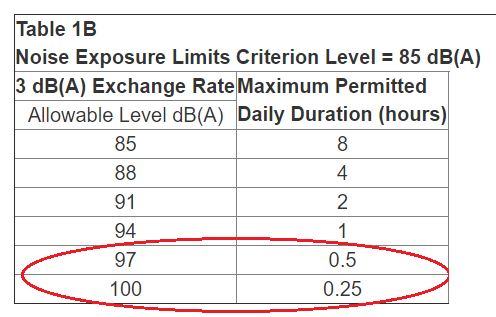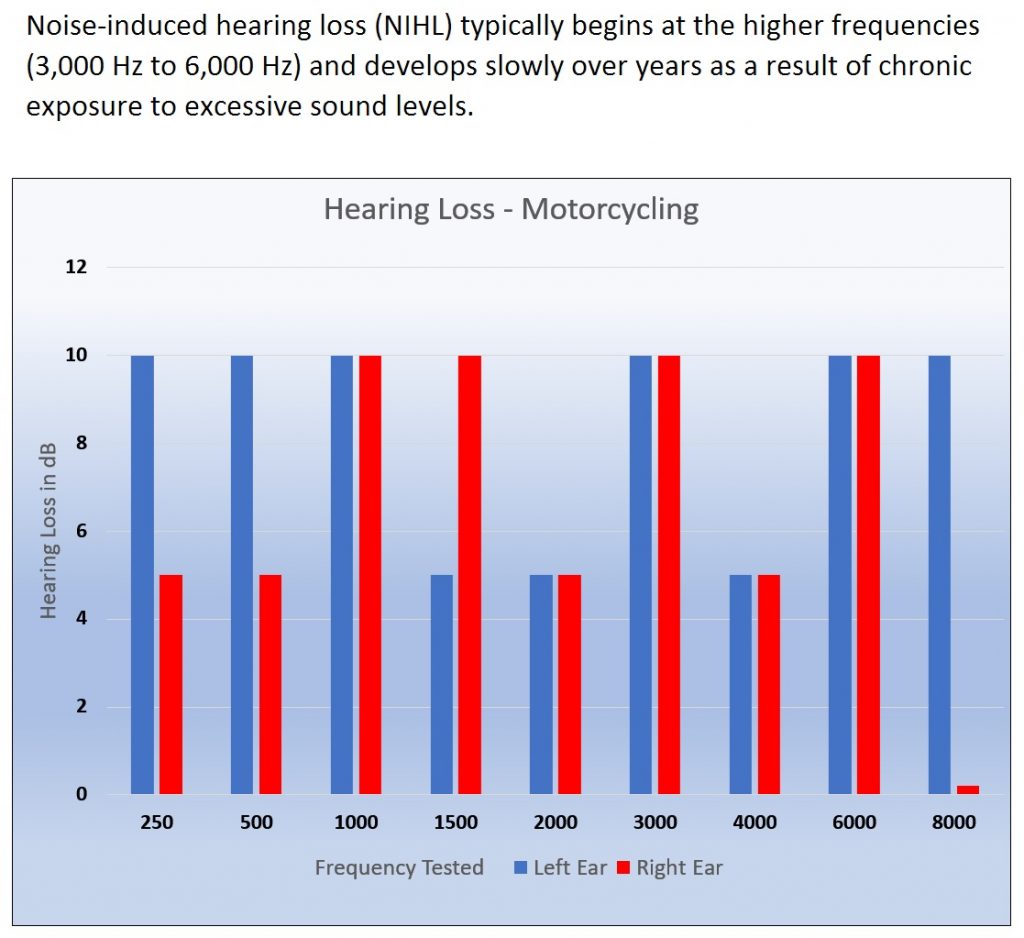With Ride For Dad 2017 just around the corner, we decided to run another our informal test to measure the effects of riding a motorcycle on our hearing.
How Loud is Too Loud?
Other than work related hearing loss, our leisure time activities are the greatest risk factors when it comes to noise induced hearing loss (NIHL). Last year’s post Ducati Monster: How Loud Is It?, showed that our test bike was louder than the threshold where hearing protection is recommended . Regulations in Manitoba dictate that a working day with sustained noise levels over 85 dB requires that hearing protection be made available. Our test bike hit 99 dB at just 4000 RPM standing still.
As noise levels increase past 85 dB the “safe” exposure time limit decreases quickly as you can see in this chart below.

The type of hearing loss we are talking about is very subtle. Because it occurs over such a long period of time that it’s almost impossible to notice until it’s too late.
Noise induced hearing loss is 100% preventable and permanent.
Our Experiment:
We used a simple informal before and after test with one subject aged 48 who rides occasionally over the last few years.
Step 1: we performed a hearing test on our rider to verify our test rider’s hearing was within the “normal” range.
Step 2: go for a typical short ride – 1 to 1.5 hours city and highway riding.
Step 3: immediately upon returning to the Polo Park Hearing Centre a second hearing test was performed with a different technician.
Step 4: we then compared the results between the two audiograms.
The human voice is typically heard at a range of frequencies from 250Hz to 4000 Hz
The Results: Better & Worse Than Expected?
On our previous test, Logan (2017): How Loud is it?, simply watching a loud movie was enough to record temporary hearing loss that reached as high as 10 dB at certain frequencies. In our snowmobiling test, we managed to record a significantly greater hearing loss of 20 dB. So needless to say, it came as a bit of a surprise that the highest level of hearing loss was only 10 dB (10 db is still serious). But there is a twist to the hearing loss recorded.
10 dB of hearing loss is significant and would hinder your ability to hear person’s voice in a noisy room like a restaurant.

When you look at the chart above, the hearing loss ranges 5 to 10 dB at all frequencies except for the right ear at 8000 Hz! You will also notice that the hearing loss is almost identical both ears across all the frequencies tested. Both our previous tests lack this global hearing loss in both ears.
Our conclusion?
Motorcycling like so many of our other leisure activities is just plain loud. Hearing protection is definitely recommended for any extended period of time.
“After a day of riding my hearing was bad enough that I was almost yelling instead of talking in a normal voice.” David G.
The short-term hearing loss we recorded is a result of stressing the inner ear’s hair cells that sense sound. Once hair cells become damaged they do not regenerate. That’s why any damage, no matter how small, adds up over time to become noticeable hearing loss. In the end, hearing protection is a lot less noticeable than hearing loss! Play safe!
Let us know what you think – leave a comment!
To hear what you’ve been missing, call the Polo Park Hearing Centre Monday to Friday between 9 a.m. and 5:30 p.m. and Saturday between 10 a.m. and 2 p.m. (204) 788-1083
Updates: How loud is the bike we rode? Here’s our article on testing the motorcycle’s exhaust with a professional meter loaned to us buy the Quest Music Store.
The best ear plugs for motorcycle riding are custom earplugs. We actually did a hearing test with custom moulded earplugs in our ears to prove it!

